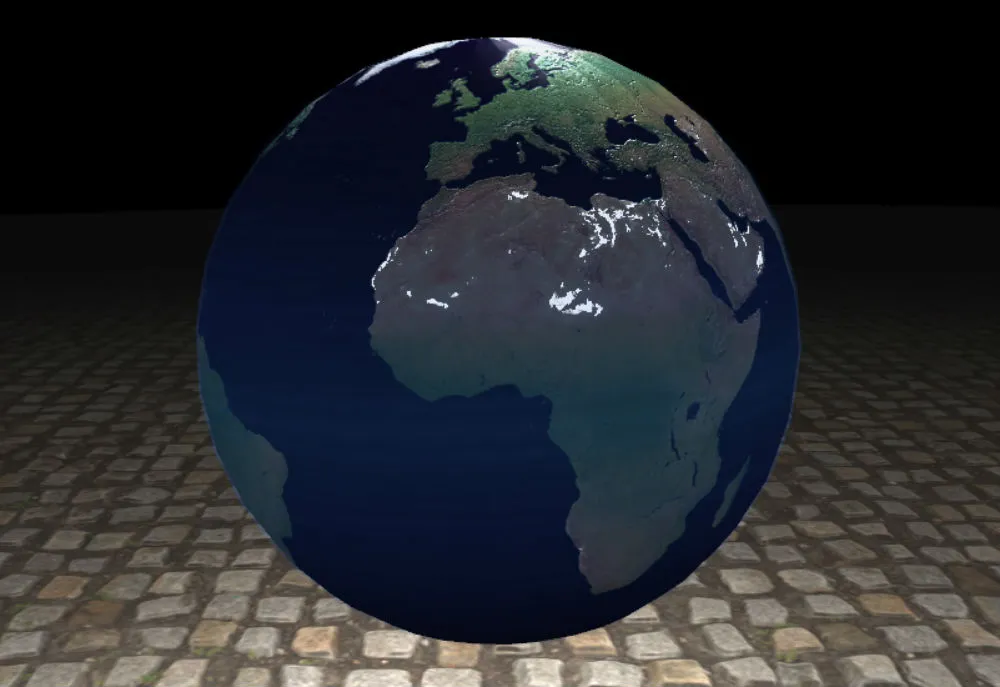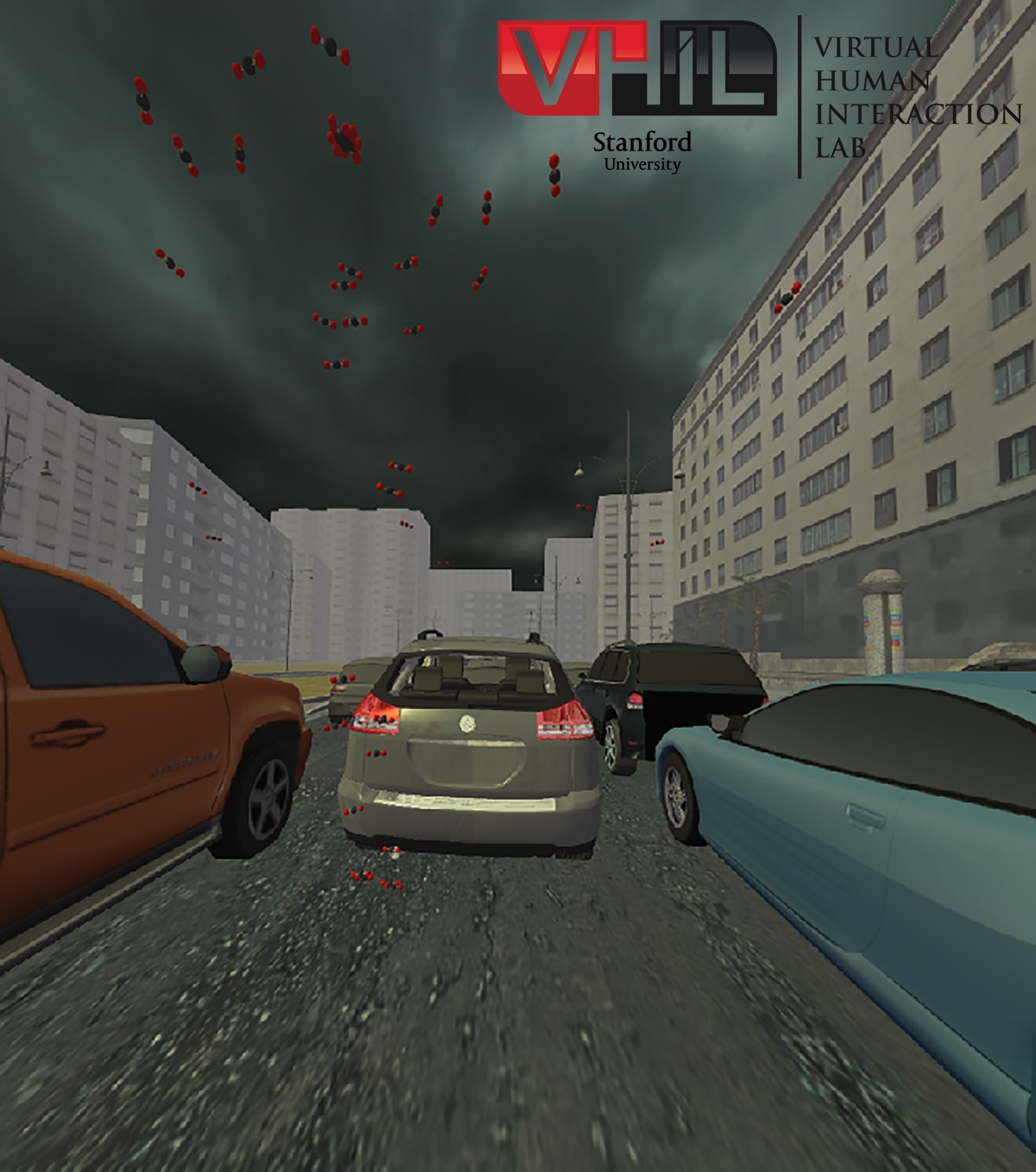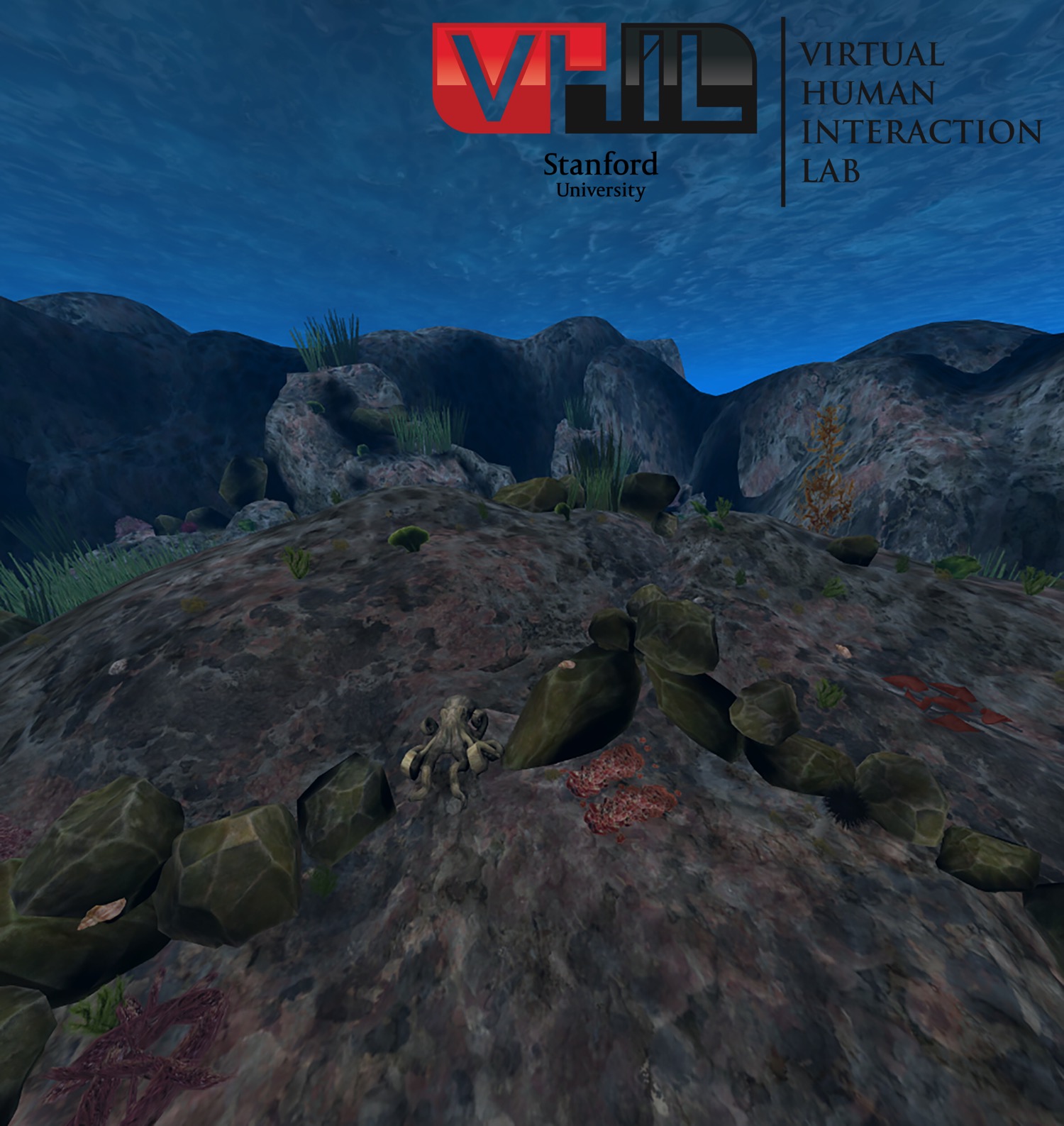Ocean acidification is not something most people are immediately passionate about. Unless they understand it, that is. When you realize that this process will effectively wipe out some of some of our world’s most beautiful landscapes, and decimate countless species of marine flora and fauna that depend upon it, then it starts to become a bit more real. And that’s where VR comes in, because VR is very good at bringing abstract concepts to life and making them feel real for the user.
The Ocean Acidification VR Experience does this by taking you on a journey where you can see where those carbon dioxide molecules go, and what they do, once they leave your car’s exhaust pipe. It shows you exactly how the CO2 we pump into the atmosphere every day has a direct impact on the health of coral reefs, and the broader ocean ecosystem. This is a project I’ve been following for quite a while now, having first met the team working on it at Stanford University’s Virtual Human Interaction Lab early last year.
I talked to the project lead Cody Karutz about how the immersive nature of VR as a medium increased people’s empathetic connection to the problem. Their research has consistently found evidence that creating such an emotional connection is a factor in getting people to positively change their behavior and therefore reduce their emissions. Since then, the team continued their research into how this increased engagement and empathy could be leveraged as an education tool.
“360 video is good for showing the user something in a more immersive way, but it has some passive limitations. By making the experience interactive like we’ve done here it gives the user a framework for not only observing, but also relating their actions to their own situation. We still have a way to go on perfecting how that works, but it’s pretty powerful,” explains Karutz.
When they premiered that previous 360 version at Tribeca, the team asked users for their consent in collecting data about their experience: “Usually it would take us a really long time to collate that much feedback in the lab, but in the space of one weekend we got hundreds of responses,” Karutz says. And this has proved extremely useful in developing the new iteration, which was demoed for the first time at the Global Education and Skills Forum in Dubai this week. The event, organized by the Varkey Foundation, explores how education can be used to solve the worlds’ problems, and this year particularly focused on how we can equip children to become global citizens. And a key part of this concept of global citizenship is caring for the environment.
“As scientists we’re privileged because can go to these places and enjoy their beauty, but also have the knowledge to understand what’s causing the changes to that environment,” says Karutz. “That’s something that most people don’t have, but with VR we can provide both the access and the data to fill that knowledge gap, in a way that makes sense for the user in their own lives.”
The VR journey (I was using the Oculus) starts in a gridlocked road where you’re surrounded by cars. The voice-over instructs you on what to do, and once you use the controller to click on the car standing in front of you, the individual COD molecules become visible, and you can follow one of them as it lands on the ocean, changing its chemical composition and making it more acidic. We then move underwater to a healthy ocean floor environment, where you’re tasked with finding as many healthy sea snails as you can.
The surroundings then change to show a much more barren seascape, where natural CO2 rising from the ocean floor has made it impossible for any shelled species to survive. Without corals, snails, clams and the like, the entire food chain and ecosystem becomes virtually nonviable, and what you have is an underwater desert. That same acidification effect, our guide concludes, is what will happen unless we change our habits soon. By the end of the century, a lot of our most treasured and bio diverse ecosystems (such as the Great Barrier Reef) would look like that desolate picture. Yet it’s not too late to change all that, the voice urges.
The sense of loss is palpable as you watch the ocean absorb invisible CO2 molecules, a coral reef degrade and marine life disappear as the ocean acidifies. Each step of that journey is based on decades of marine science research. In the context of uncertain times for environmental policy and funding, it seems that initiatives like this are more needed than ever. This particular project was completed with support from the Gordon and Betty Moore Foundation and the Stanford Woods Institute for the Environment.
The hope is that this will become a useful education tool teaching both children and adults about the consequences of their actions (or lack of action, as it might be) which helps to turn the tide of environmental destruction our oceans are facing. And it seems that if we don’t want our children to only be able to experience biodiversity in Virtual Reality, that will need to happen soon.



























